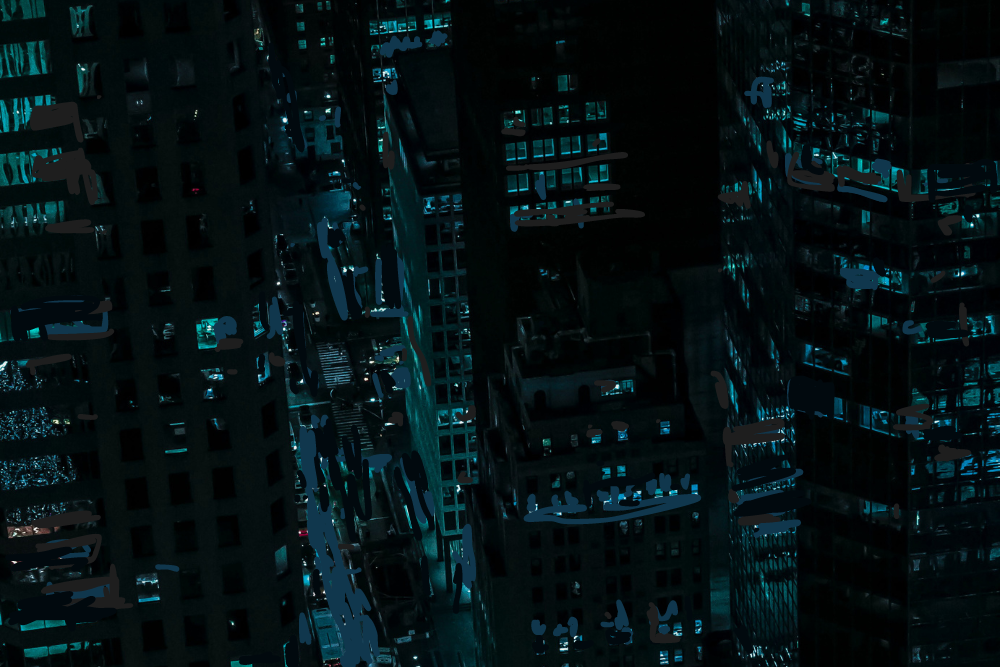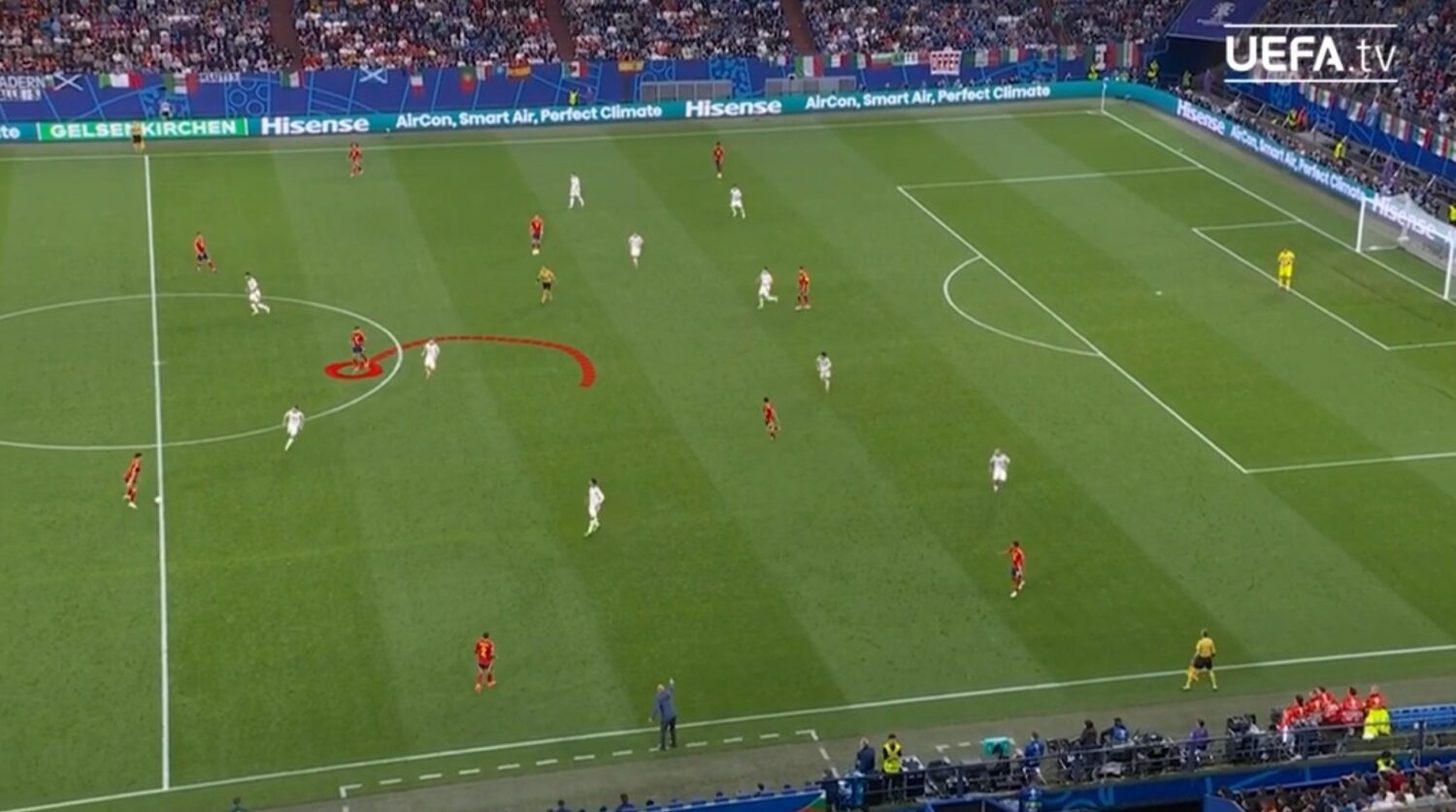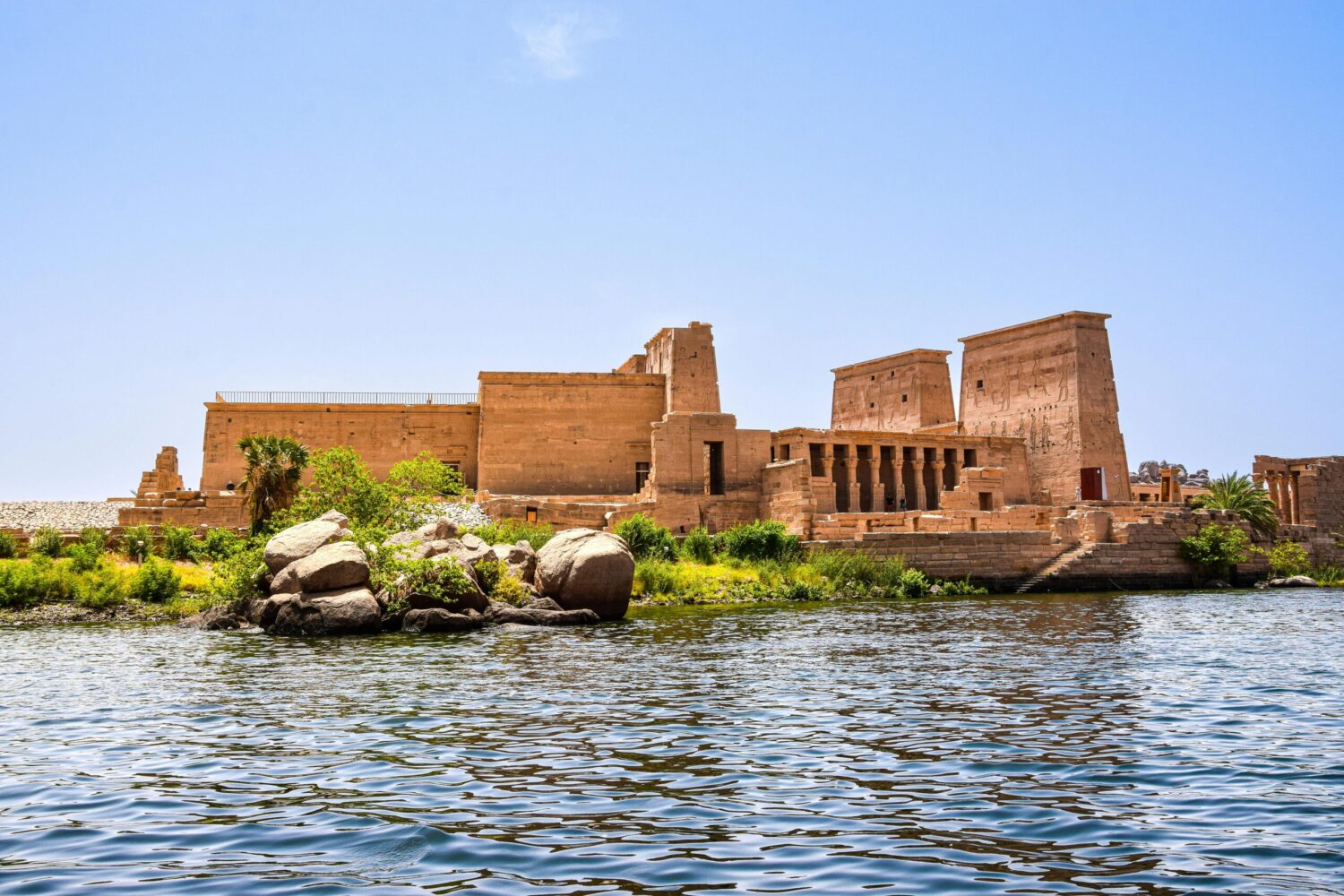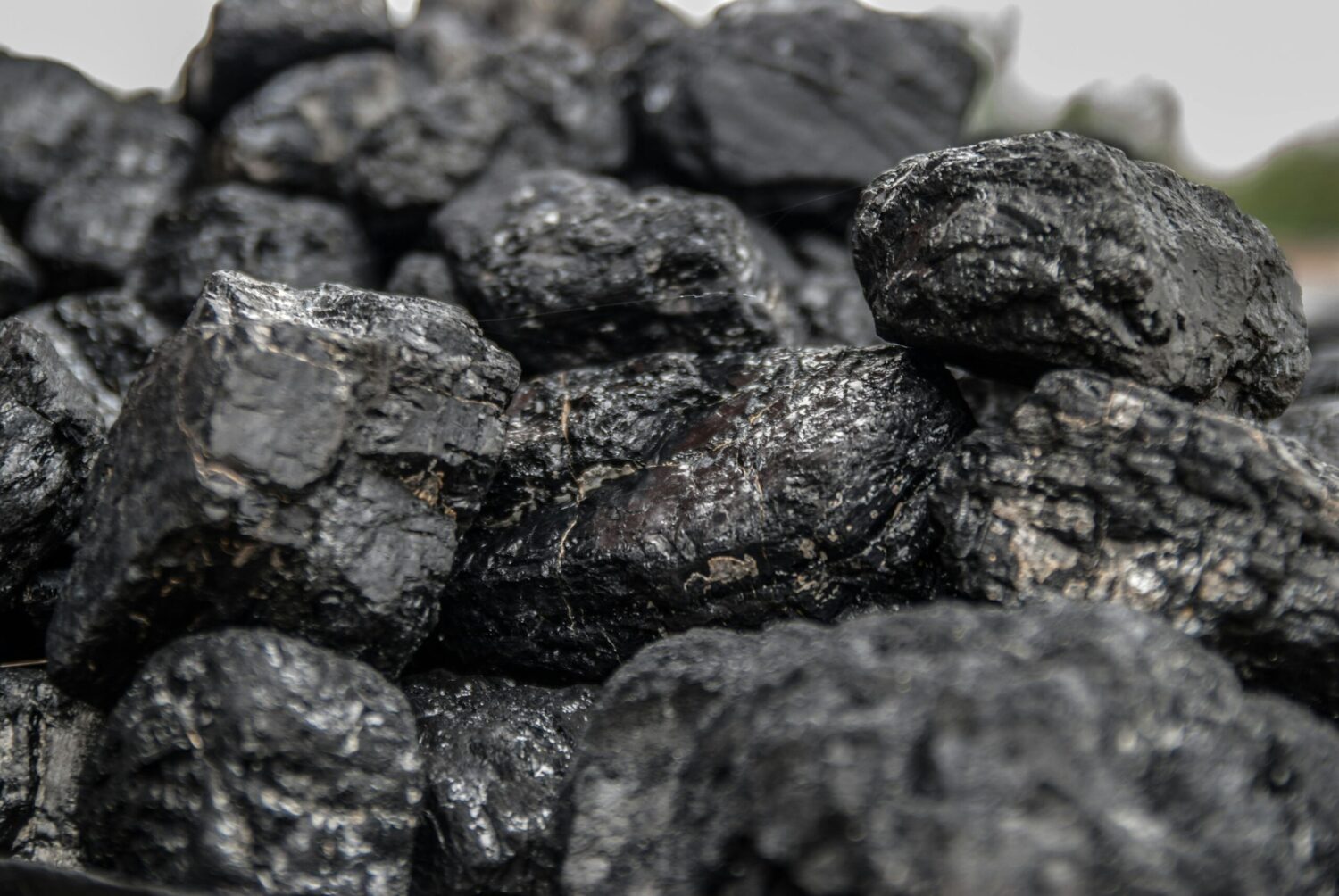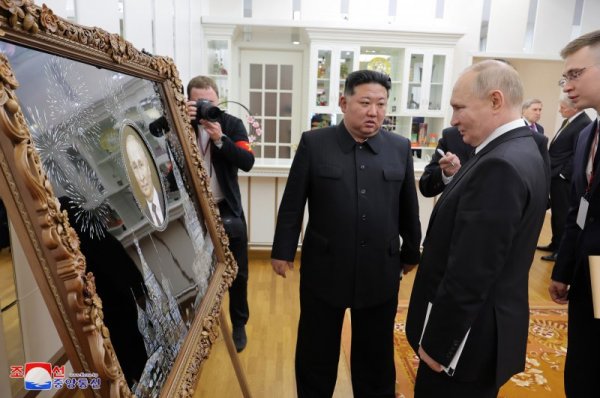You, adventurous traveler, are in for a treat this summer as we uncover hidden gems across Europe waiting to be discovered. Forget the overcrowded tourist hotspots and set your sights on these lesser-known destinations that promise charm, beauty, and cultural richness without the crowds. Whether you crave tranquil beaches, medieval villages steeped in history, or breathtaking natural landscapes, these off-the-beaten-path locations will make your summer unforgettable. So pack your bags, grab your camera, and get ready to explore Europe like never before!
Hidden Gems – Lesser-Known European Destinations To Explore This Summer
Discovering the Charm of Slovenia’s Soca Valley
A hidden gem waiting to be discovered on your European adventure this summer is Slovenia’s Soca Valley. The charm of the Soca Valley lies in its breathtaking natural beauty, with crystal-clear turquoise waters winding through emerald green forests and dramatic mountain peaks. This outdoor enthusiast’s paradise offers a range of activities, from hiking and mountain biking to kayaking and paragliding, ensuring there’s something for every adventurer.
Immerse yourself in the tranquility of the valley as you explore quaint villages and encounter friendly locals eager to share their culture and traditions with you. Make sure to discover the hidden gems off the beaten path, such as the stunning Tolmin Gorges or the historic Kobarid Museum, which pays tribute to World War I history in the region.
Whether you’re seeking adrenaline-pumping activities or simply a peaceful retreat surrounded by nature, Slovenia’s Soca Valley offers a unique blend of charm and adventure that will make your summer getaway truly unforgettable.
Unwinding in the Picturesque Town of Bovec
Unwinding in the picturesque town of Bovec is a must-do experience during your exploration of Slovenia’s Soca Valley. Nestled amidst the Julian Alps, Bovec is a tranquil oasis that beckons travelers with its serene ambiance and stunning alpine scenery. Imagine spending your days hiking through lush forests, breathing in the fresh mountain air, and unwinding by the banks of the glistening Soca River.
This idyllic town also serves as a perfect base for outdoor adventures, with a range of excursions available, including whitewater rafting on the Soca River, zip-lining through the treetops, or exploring the underground world of the Kanin Mountains in the nearby caves. After a day of exploration, treat yourself to a delicious meal at one of Bovec’s charming local restaurants, where you can savor traditional Slovenian cuisine.
Immerse yourself in the laid-back atmosphere of Bovec and let the tranquil beauty of this hidden gem rejuvenate your senses. Whether you’re seeking a peaceful retreat or exciting outdoor activities, Bovec offers the perfect blend of relaxation and adventure for your summer escape in Europe.
Hidden Gems – Lesser-Known European Destinations To Explore This Summer
Some trips are about discovering places that aren’t on everyone’s radar, exploring the paths less traveled. In this section, we will guide you through some hidden gems in Europe that offer a unique and authentic experience, away from the tourist crowds.
Exploring the Hidden Coves of Albania’s Albanian Riviera
Section nestled along the Ionian Sea, Albania’s Albanian Riviera is a treasure trove of secluded beaches and hidden coves waiting to be explored. With crystal-clear waters and breathtaking scenery, you can spend your days sunbathing on pristine pebble beaches or snorkeling in the turquoise sea. Take a boat tour to discover secret coves, dine at local family-run restaurants, and immerse yourself in the warm hospitality of the Albanian people. This underrated destination is a paradise for nature lovers and beach enthusiasts looking for an off-the-beaten-path adventure.
Relaxing in the Quaint Town of Saranda
Relaxing in the charming town of Saranda is like stepping back in time to a simpler way of life. With its laid-back atmosphere, picturesque waterfront promenade, and delicious seafood restaurants serving fresh catch of the day, Saranda is the perfect place to unwind and soak in the Mediterranean vibes. You can wander through the narrow streets lined with colorful buildings, visit ancient ruins like the UNESCO-listed Butrint archaeological site, and witness stunning sunsets over the sea. Whether you prefer to relax on the beach or sip coffee at a local cafe, Saranda offers a tranquil escape from the hustle and bustle of more touristy destinations.
Understanding the hidden gems of Europe allows you to broaden your travel horizons and discover the beauty of lesser-known destinations. Whether you choose to explore the hidden coves of Albania’s Albanian Riviera or relax in the quaint town of Saranda, you are sure to create unforgettable memories and have a truly authentic travel experience. So pack your bags, venture off the beaten path, and let these hidden gems enchant you this summer.
Hidden Gems – Lesser-Known European Destinations To Explore This Summer
Uncovering the Rich History of Bulgaria’s Plovdiv
Now, let’s examine the historical wonders of Plovdiv, Bulgaria. As one of the oldest continuously inhabited cities in Europe, Plovdiv is a treasure trove of ancient ruins, historic sites, and cultural landmarks. You can wander through the well-preserved Roman amphitheater, dating back to the 2nd century AD, or explore the charming Old Town with its cobblestone streets and colorful Renaissance houses. Immerse yourself in the rich history of this enchanting city, where every corner whispers the stories of its past.
Plovdiv, a melting pot of different civilizations and architectural styles, offers a unique blend of the old and the new. You can visit the Ethnographic Museum housed in a traditional Bulgarian Revival house or marvel at the intricate frescoes in the Church of the Holy Mother of God. Don’t miss the chance to stroll along the bustling pedestrian street of Knyaz Alexander I, lined with shops, cafes, and galleries. Your senses will be delighted by the sights, sounds, and flavors of this vibrant city.
Whether you’re a history enthusiast, an architecture lover, or simply a curious traveler, Plovdiv has something to offer you. The city’s laid-back atmosphere, friendly locals, and affordable prices make it a perfect destination for your next European adventure. So pack your bags, prepare yourself for a journey back in time, and get ready to uncover the secrets of Plovdiv’s rich history.
Wandering through the Cobblestone Streets of Old Town
Plovdiv’s Old Town is a labyrinth of narrow cobblestone streets, historic houses, and hidden courtyards waiting to be explored. You can spend hours getting lost in the maze of alleyways, stumbling upon ancient ruins, charming cafes, and art galleries along the way. The unique blend of Ottoman, Roman, and Bulgarian architectural influences will captivate you at every turn.
Hidden Gems – Lesser-Known European Destinations To Explore This Summer
Finding Solace in the Natural Beauty of Bosnia’s Sutjeska National Park
Not all who seek the tranquil beauty of nature this summer will think to journey to Bosnia’s Sutjeska National Park, but you, intrepid traveler, should certainly consider it. Nestled in the heart of the Dinaric Alps, this park is a haven for those looking to immerse themselves in untouched wilderness and rejuvenate their spirits amidst stunning landscapes. The park is home to the magnificent Perucica, one of the last two primeval forests in Europe, where you can lose yourself in the ancient trees and breathe in the pure, fresh air.
As you explore Sutjeska National Park, you will come across the mighty Tara River, known for its emerald waters and the second deepest canyon in the world. Here, you can partake in adrenaline-pumping activities such as white-water rafting or simply relax by the riverside, taking in the awe-inspiring views. The park also boasts the impressive Maglic Mountain, the highest peak in Bosnia and a challenge for avid hikers seeking spectacular vistas.
Embrace the serenity of Sutjeska National Park, where you can disconnect from the world as you immerse yourself in the **pristine** nature surrounding you. Navigate the trails, breathe in the scent of wildflowers, and listen to the symphony of bird songs above you. This hidden gem offers a chance to reconnect with the Earth and yourself, away from the hustle and bustle of more popular tourist destinations.
Hiking through the Diverse Landscapes of the Dinaric Alps
To truly experience the wonders of the Dinaric Alps, you must lace up your hiking boots and initiate on a journey through its diverse landscapes. The towering peaks, lush valleys, and crystal-clear lakes await you as you traverse the trails that wind through this remarkable mountain range. **From adrenaline-pumping ridge walks to peaceful strolls through flower-filled meadows, the Dinaric Alps offer something for every type of hiker.**
For instance, the Via Dinarica trail stretches over 1,200 kilometers, connecting the countries of Slovenia, Croatia, Bosnia and Herzegovina, Montenegro, Albania, Kosovo, and Serbia. **This epic trail** is a hiker’s paradise, showcasing the stunning beauty and immense diversity of the region. You can choose to tackle a small section of the trail or challenge yourself to complete the entire journey, discovering hidden corners and breathtaking vistas along the way.
Hidden Gems – Lesser-Known European Destinations To Explore This Summer
Unlike Underrated destinations in Europe?, many travelers often overlook the enchanting beauty and cultural richness that can be found in lesser-known European destinations. These hidden gems offer a unique and authentic experience, away from the crowds and tourist hotspots, allowing you to discover the charm and character of these hidden treasures at your own pace.
Delving into the Vibrant Culture of Croatia’s Slavonia Region
Slavonia, located in eastern Croatia, is a region brimming with vibrant culture waiting to be explored. From its picturesque vineyards and charming villages to its rich history and traditional folklore, Slavonia offers a glimpse into a side of Croatia that is often overshadowed by popular coastal destinations. Immerse yourself in the local way of life, indulge in authentic traditions, and discover the warm hospitality of the Slavonian people as you wander through historic towns and vibrant markets.
Savoring the Flavors of Traditional Slavonian Cuisine
With a focus on fresh, locally-sourced ingredients and time-honored recipes, Slavonian cuisine is a culinary delight not to be missed. Indulge in hearty dishes like kulen (spicy sausage), cobanac (meat stew), and paprikas (pepper stew), each bursting with bold flavors and savory spices. Don’t forget to pair your meal with a glass of local wine or rakija (fruit brandy) for a truly authentic dining experience that will tantalize your taste buds and leave you craving more.
Slavonian cuisine is a true reflection of the region’s agricultural roots and culinary traditions, offering a delicious fusion of flavors influenced by its diverse history and cultural heritage. Whether you choose to dine in a quaint family-run tavern or savor a meal at a rustic countryside restaurant, you can expect homemade specialties that showcase the essence of Slavonian cuisine. So, be sure to sample the local delicacies, explore the gastronomic treasures of the region, and immerse yourself in a culinary journey that will leave you with unforgettable memories of Slavonia.
Marveling at the Architectural Wonders of Estonia’s Tallinn
To truly immerse yourself in the charm of Tallinn, Estonia, start by exploring its architectural wonders. The old town is a well-preserved medieval gem, boasting unique architecture that dates back to the 13th century. Wander through the cobblestone streets lined with colorful buildings, and marvel at the Gothic spires of churches that dominate the skyline. Don’t miss the opportunity to visit the iconic Toompea Castle, which offers breathtaking views of the city below.
As you stroll through the streets of Tallinn, you’ll encounter a mix of architectural styles, from medieval to Baroque to Soviet-era buildings. The fusion of these influences creates a captivating atmosphere that is unlike any other European city. Take your time to admire the intricate details of the facades, the ornate doorways, and the hidden courtyards tucked away behind the main streets. Every corner you turn reveals a new architectural surprise waiting to be discovered.
Whether you’re a history buff, an architecture enthusiast, or simply a curious traveler, Tallinn’s architectural wonders are sure to captivate you. The city’s unique blend of old-world charm and modern vibrancy makes it a hidden gem worth exploring this summer. Soak in the rich history and artistic beauty that Tallinn has to offer, and let its architectural wonders transport you to a bygone era.
Unraveling the Mysteries of the City’s Medieval Past
Marveling at the architectural wonders of Tallinn is just the beginning of your journey into the city’s fascinating medieval past. The old town of Tallinn is not just a picturesque setting; it also holds centuries of history waiting to be uncovered. Step back in time as you explore the winding cobblestone streets, **medieval** towers, and **well-preserved** city walls that have stood the test of time.
For instance, you can visit the **Tallinn City Museum**, located in a 14th-century merchant house, to learn about the city’s medieval **origins** and development. Discover the stories of **traders**, **knights**, and **royalty** who once roamed the streets of Tallinn. Immerse yourself in the **intriguing** tales of the city’s past and gain a deeper appreciation for its **cultural heritage**.
Delve deeper into Tallinn’s medieval past by visiting sites like the **Kiek in de Kök** tower and the **Alexander Nevsky Cathedral**, each offering a unique perspective on the city’s history. By unraveling the mysteries of Tallinn’s medieval past, you’ll gain a newfound understanding of this enchanting city and its role in **shaping** European **history**.
Hidden Gems – Lesser-Known European Destinations To Explore This Summer
Escaping to the Secluded Beaches of Finland’s Archipelago
For a truly tranquil and off-the-beaten-path escape, Finland’s Archipelago offers a unique setting that will leave you in awe. The Archipelago consists of thousands of islands, providing you with a chance to discover hidden gems along its coastlines. Imagine yourself strolling on secluded beaches, surrounded by the peaceful sounds of nature – a perfect retreat from the hustle and bustle of everyday life. Embrace the serenity of this picturesque destination as you breathe in the fresh sea air and soak up the sun.
Exploring the Archipelago by boat allows you to reach untouched shorelines that are pristine and devoid of crowds. You can spend your days kayaking through crystal-clear waters or simply relaxing on the beach with a good book. The charm of this secluded paradise lies in its simplicity and natural beauty that surrounds you at every corner. This hidden gem is a place to recharge and reconnect with yourself in a truly peaceful environment.
As you explore the secluded beaches of Finland’s Archipelago, you’ll find yourself immersed in a world of natural wonders and tranquility. Whether you’re looking for a romantic getaway or a solo adventure, this destination offers a unique experience that will stay with you long after you’ve left. So, pack your bags and escape to the serenity of Finland’s Archipelago for a summer like no other.
Discovering the Unique Charm of the Åland Islands
On the other side of the Archipelago Sea lies the Åland Islands, a hidden treasure waiting to be discovered. These islands boast a unique charm that sets them apart from any other destination in Europe. With their distinct culture and breathtaking landscapes, the Åland Islands offer a glimpse into a world where time seems to stand still.
Unique to the Åland Islands is their autonomy within Finland, giving them a cultural blend of Swedish and Finnish influences. Strolling through the quaint towns and countryside of these islands, you’ll be enchanted by the peaceful atmosphere and archipelago views that surround you. From historical sites to charming cafes, the Åland Islands offer a truly authentic experience that will captivate you at every turn.
Unique to the Åland Islands is their autonomy within Finland, giving them a cultural blend of Swedish and Finnish influences. Strolling through the quaint towns and countryside of these islands, you’ll be enchanted by the peaceful atmosphere and archipelago views that surround you. From historical sites to charming cafes, the Åland Islands offer a truly authentic experience that will captivate you at every turn.
Are you ready to immerse yourself in the unspoiled beauty of the Åland Islands this summer? Whether you’re interested in cultural exploration or simply relaxing in a serene setting, this hidden gem in the heart of the Baltic Sea is sure to capture your heart. Embark on a journey to the Åland Islands and uncover a unique destination that promises an unforgettable experience.
Hidden Gems – Lesser-Known European Destinations To Explore This Summer
Wandering through the Rolling Hills of Hungary’s Tokaj Region
Keep any preconceived notions you have about Hungary aside as you probe into the picturesque Tokaj region. This hidden gem is known for its lush vineyards, charming villages, and breathtaking landscapes. As you wander through the rolling hills adorned with grapevines, you will feel like you have stepped into a tranquil paradise. The Tokaj region is renowned for its sweet dessert wines but also boasts a burgeoning wine scene with dry whites and reds worth exploring.
Immerse yourself in the rich history and culture of Tokaj as you visit local wineries and sample exquisite wines unique to the region. Whether you’re a wine connoisseur or just someone who appreciates a good glass of vino, the Tokaj region offers a delightful experience for every palate. The warm hospitality of the locals and the stunning views of the countryside will make your visit to Tokaj a truly memorable one.
Indulge in leisurely strolls through the vineyards, enjoy wine tastings with knowledgeable sommeliers, and savor traditional Hungarian dishes paired perfectly with the local wines. The Tokaj region invites you to slow down, unwind, and savor the beauty of this hidden European gem.
Sampling the Finest Wines of the Region
For a truly immersive experience in the Tokaj region, make sure to sample the finest wines the area has to offer. From the renowned Tokaji Aszú dessert wine to the dry Furmint and Hárslevelű varieties, you will be spoiled for choice. The centuries-old winemaking traditions of Tokaj have resulted in exceptional wines that have gained international recognition.
Hungary’s Tokaj region may still be under-the-radar compared to other European wine destinations, but its exquisite wines, serene landscapes, and welcoming atmosphere make it a must-visit for any wine enthusiast or traveler looking to discover hidden treasures in Europe. Whether you’re exploring the vineyards or indulging in wine tastings, Tokaj promises an unforgettable experience that will leave you longing to return.
Hidden Gems – Lesser-Known European Destinations To Explore This Summer
Uncovering the Secrets of Latvia’s Gauja National Park
All you adventurous souls out there, if you are seeking a destination off the beaten path, look no further than Gauja National Park in Latvia. This hidden gem is a paradise for nature lovers and outdoor enthusiasts. One of the highlights of this park is the Gauja River, offering breathtaking landscapes and opportunities for kayaking, canoeing, and hiking. As you traverse through the park, you’ll encounter dense forests, medieval castles, and charming villages that seem plucked from a fairytale.
One thing to keep in mind while exploring Gauja National Park is the rugged terrain and unpredictable weather conditions. Make sure to pack accordingly and wear sturdy hiking shoes. Additionally, the park is home to a variety of wildlife, including lynx and eagles, so keep an eye out for these majestic creatures as you wander through the trails. Despite the challenges, the beauty and tranquility of Gauja National Park make it a must-visit destination for those craving a unique outdoor experience.
So, if you’re looking to escape the crowds and immerse yourself in Latvia’s natural beauty, you should definitely consider adding Gauja National Park to your summer travel list. Whether you’re a nature enthusiast, history buff, or adventure seeker, this hidden gem has something to offer for everyone.
Exploring the Picturesque Town of Sigulda
An exciting adventure awaits you in the picturesque town of Sigulda, located in the Gauja River Valley. This charming town is known for its stunning landscapes, historic sites, and outdoor activities. As you wander through the cobblestone streets, you will discover medieval castles, sprawling forests, and the iconic Turaida Castle, offering panoramic views of the surrounding countryside.
An crucial activity in Sigulda is the thrilling bobsleigh track, where you can experience an adrenaline-pumping ride like never before. Whether you choose to explore the town on foot, by bike, or even from above on a hot air balloon ride, Sigulda promises an unforgettable experience for all who venture there. The town’s rich history and natural beauty make it a hidden gem waiting to be discovered.
Once you step foot in Sigulda, you will be captivated by its charm and allure. With its perfect blend of adventure and tranquility, this town is a delightful surprise for you to explore this summer. So, don’t miss the chance to uncover the secrets of Sigulda and create lasting memories in this enchanting destination.
Hidden Gems – Lesser-Known European Destinations To Explore This Summer
Finding Inspiration in the Artistic Heritage of Lithuania’s Vilnius
Finding yourself in the picturesque capital of Lithuania, Vilnius, is like stepping into a vibrant canvas filled with artistic wonders waiting to be explored. The city’s artistic heritage dates back centuries and is evident in its charming cobblestone streets, historic buildings, and abundant art galleries. As you wander through the city, you’ll be captivated by the blend of Gothic, Renaissance, and Baroque architecture that adorns the streets.
Among the must-visit spots is the Vilnius University, one of the oldest universities in Eastern Europe, boasting stunning courtyards and architectural details. Dive into the local art scene by visiting the National Gallery of Art, which houses a diverse collection of Lithuanian artworks, providing insight into the country’s rich cultural past. You’ll also find hidden gems in the form of street art that decorates the city, adding a modern twist to Vilnius’ artistic allure.
Immerse yourself in the creative ambiance of Vilnius by exploring its numerous art studios and craft shops. Take a leisurely stroll through Literatų Street, known for its literary significance and charming atmosphere. Discovering Vilnius’ artistic heritage is a journey filled with surprises and inspiration at every turn, promising a unique and enriching experience for your summer travel itinerary.
Finding Admiring the Baroque Architecture of the Old Town
Finding yourself lost amidst the enchanting Baroque architecture of Vilnius’ Old Town is a feast for the eyes that will leave you in awe. The intricate facades of the buildings, ornate churches, and charming squares will transport you back in time to a bygone era of grandeur and elegance. You can wander through the narrow streets, each corner revealing a new architectural marvel to admire.
The highlight of your architectural exploration in Vilnius is the Vilnius Cathedral, a masterpiece of Baroque architecture that dominates the city’s skyline. Its impressive exterior and ornate interior will leave you mesmerized by the skill and artistry of the craftsmen who created this cultural gem. You’ll also encounter hidden courtyards and peaceful gardens tucked away behind the bustling streets, offering moments of tranquility amidst the architectural splendor.
With its elegant facades, intricate details, and rich history, Vilnius’ Old Town is a testament to the city’s architectural heritage and a treasure trove waiting to be discovered. Exploring the Baroque wonders of Vilnius will not only satisfy your architectural curiosity but also leave you with a newfound appreciation for the beauty and artistry of this lesser-known European gem.
Hidden Gems – Lesser-Known European Destinations To Explore This Summer
Many of you are probably thinking about where to go this summer, looking for unique and off-the-beaten-path destinations to explore. If you want to discover some hidden gems in Europe, you should check out this list of 10 Underrated Destinations in Europe to Visit This Summer.
Relaxing in the Natural Hot Springs of North Macedonia’s Kratovo
An escape to the quaint town of Kratovo in North Macedonia offers you a peaceful retreat surrounded by stunning natural scenery. One of the town’s hidden treasures is its natural hot springs, known for their healing properties and therapeutic benefits. Imagine yourself soaking in the warm mineral waters, letting go of all your stress and worries. You can immerse yourself in the local culture and enjoy the traditional cuisine after a relaxing day at the hot springs.
Exploring the Ancient Ruins of Stobi
Ancient history enthusiasts will be delighted to explore the well-preserved ruins of Stobi in North Macedonia, a significant archaeological site dating back to the Roman era. Wandering among the ancient remains of this once-thriving city, you can feel the echoes of the past and marvel at the architectural wonders. Discovering the mosaics, temples, and amphitheater within the archaeological park will transport you back in time, offering a glimpse into the rich history of the region.
Ruins
Stobi’s ruins are not only impressive but also hold a wealth of historical and cultural significance that will fascinate history buffs. The site is still being excavated, uncovering more secrets of the ancient city with each discovery. Exploring Stobi allows you to walk in the footsteps of Romans and Byzantines, providing a unique insight into the past civilizations that once thrived in this region.
Hidden Gems – Lesser-Known European Destinations To Explore This Summer
Discovering the Charming Coastal Towns of Montenegro’s Bay of Kotor
To truly immerse yourself in the beauty and tranquility of the Adriatic coastline, you should make your way to Kotor, a picturesque town nestled in Montenegro’s stunning Bay of Kotor. This hidden gem boasts a rich history, with its well-preserved medieval old town and impressive fortress walls that offer panoramic views of the bay below. As you wander through the narrow cobblestone streets, you’ll discover hidden cafes, boutique shops, and charming squares where you can soak in the local culture and hospitality.
One of the highlights of visiting Kotor is exploring the surrounding coastal towns that dot the bay, such as Perast and Tivat. Perched on the water’s edge, Perast is known for its beautiful baroque architecture and the picturesque islands of Our Lady of the Rocks and St. George. In contrast, Tivat offers a more modern vibe with its luxury marina, upscale restaurants, and vibrant nightlife scene. Each town has its unique charm and allure, making the Bay of Kotor a must-visit destination for those seeking a more off-the-beaten-path European experience.
Whether you’re hiking up the fortress walls of Kotor for breathtaking views, taking a leisurely boat ride to the nearby islands, or simply enjoying a fresh seafood meal by the water’s edge, the Bay of Kotor will captivate you with its scenic landscapes and quaint coastal towns. This hidden corner of Europe is the perfect escape for travelers looking to explore a lesser-known gem that brims with history, culture, and natural beauty.
Taking in the Breathtaking Views of the Adriatic Sea
To immerse yourself further in the beauty of the Adriatic Sea, a leisurely drive along the winding coastal roads of Montenegro will lead you to some of the most breathtaking views you’ll ever witness. The rugged cliffs plunging into the azure waters, the quaint fishing villages perched on the rocky shores, and the dramatic sunsets casting a golden glow over the horizon will leave you in awe of nature’s grandeur.
Uncovering the Hidden Gems of Poland’s Masurian Lake District
After you’ve explored the bustling cities and quaint villages of Europe, it’s time to uncover the hidden gems of Poland’s Masurian Lake District. This picturesque region, located in northeastern Poland, is a nature lover’s paradise. With over 2,000 crystal-clear lakes scattered throughout the area, you can spend your days sailing, kayaking, or simply relaxing by the water’s edge.
Masurian Rich History of the Region
Any history enthusiast will revel in exploring the rich history of the Masurian Lake District. With its storied past dating back to the Teutonic Knights and the Kingdom of Prussia, you’ll find charming castles, churches, and historic sites dotted across the landscape. As you wander through the narrow cobbled streets of quaint villages like Gizycko and Mikolajki, you’ll feel like you’ve stepped back in time.
To truly immerse yourself in the region’s history, make sure to visit the Wolf’s Lair, Adolf Hitler’s former headquarters during World War II. The sprawling complex of bunkers and buildings hidden deep in the forest offers a chilling glimpse into the past. Additionally, the Masurian Canal, a 19th-century engineering marvel, is a must-see for engineering enthusiasts.
1. Experience authentic culture in Bratislava, Slovakia.
2. Discover scenic beauty in the Faroe Islands.
3. Delight in historic charm of Vilnius, Lithuania.
4. Relax in the picturesque coastal town of Kotor, Montenegro.
5. Explore the stunning architecture of Porto, Portugal.
6. Embrace nature in the Azores, Portugal.
To wrap up
Now, as you’ve explored some of Europe’s best hidden gems for 2024, remember that the allure of these lesser-known destinations lies in their unspoiled beauty and unique experiences waiting to be discovered. These off-the-beaten-path locations offer a chance to escape the crowds and immerse yourself in the charm and authenticity of Europe’s hidden treasures. So, why not commence on a journey to one of these enchanting destinations and create unforgettable memories this summer?
For more hidden gems and insider tips on European destinations, check out Europe’s best hidden gems 2024 list. From picturesque villages to stunning natural landscapes, there’s a world of hidden wonders waiting to be explored. So pack your bags, set off on an adventure, and uncover the magic of Europe’s hidden gems this summer.
Whether you’re craving a peaceful retreat in the mountains, a cultural experience in a historic town, or a beach getaway in a secluded paradise, Europe’s hidden gems have something for every traveler. So, don’t hesitate to step off the well-trodden path and discover the hidden treasures that await you in these lesser-known European destinations. Your next unforgettable adventure is just around the corner!




